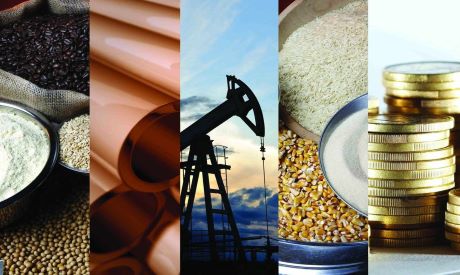Financial deleveraging not surfacing in physical commodity markets
Global commodities
The recession versus reflation trade enthralling global markets since mid-2022 has largely determined investors’ appetite toward commodities. The recent banking turmoil has exacerbated strains, keeping investor participation low, spurring volatility due to the lack of liquidity. Yet, despite the deleveraging in commodity markets, financial contagion has critically not channelled into real activity and physical fundamentals. If investor sentiment improves – given still deep backwardation across most major commodities – the pivot from the recession trade to the reflation trade may be swift, especially should the Fed become more dovish as our US rates strategist believes. As we have catalogued recently, the best example for this type of upside risk is 2007, a period which looks strikingly similar to today (see here). Though we acknowledge that while commodity markets are significantly tighter than they were in 2007 and China’s acceleration is robust, the inflation backdrop today makes it far harder for the Fed to create as much liquidity as they did in 2007, capping the upside potential. Nonetheless, with the Fed near a pause today and tight physical commodity markets still very much intact, we are convicted that tactical upside opportunities will manifest across the complex once investor positioning garners traction.
Energy
The oil market continues to hold onto gains following the shock OPEC+ cut announcement on 2 April (see here). Notwithstanding this bullish price development, we have downgraded our oil price profile and now anticipate Brent crude averaging USD88/b in 2023 (from USD101/b previously), which is more mark-to-market premised on the reality of the scarring reverberations of a delevered market environment rather than a large shift in expected forward fundamentals. Meanwhile, European natural gas (TTF) prices are paring recent gains on renewed inflationary pressures on higher oil prices is dampening investor sentiment on economic growth. We acknowledge that exceptionally high storage levels currently offer negligible near-term support to TTF prices, and we revise our levels lower.
Base metals
Global inventories of aluminium and copper are finally beginning to draw from levels well below last year, with this micro tightening pivot underpinned by the strength of demand recovery in China which offer a strong counter to base metals to developed market headwinds. Going forward, the base metals space still remains the uncrowded trade, in our view (see here).
Precious metals
Gold looks primed to hit a record. Prices have extended a surge to a 13 month high – breaching north of USD2,000/oz – after the US JOLTS data showed the jobs market is loosening, diminishing bets the Fed will need to hike rates further. Looking ahead, with concerns around US banking stress created by higher rates now looking to persist, and policymakers forced to intervene to ensure financial stability along with price stability, gold has realigned with real rates, the US dollar and credit risk more broadly. While the situation remains fluid, fear is contagious and we tactically raise our gold price forecasts and now look for levels to average USD1,980/oz (USD1,874/oz previously) this year.
Bulk commodities
Iron ore have retraced recent gains as China’s National Development and Reform Commission (NDRC) urged companies to “not deliberately exaggerate the atmosphere of price increases”. Meanwhile, tumbling gas prices and a record rally for carbon have seen gas power plants in Europe become cheaper with a return of coal-to-gas fuel switching for power – the last time this was on the cards in the region was June 2021.
Agriculture
Sugar prices continue to rise – currently trading at the highest level since 2016, owing to the strength in oil prices and also the recent tax regulation in Brazil which benefits ethanol producers.
Core indicators
Price performance and forecasts, flows, market positioning, timespreads, futures, inventories, storage and products performance are covered in the report.
PHYSICAL COMMODITY DEMAND UNDETERRED FROM FINANCIAL VOLATILITY
BLOOMBERG COMMODITY INDEX (BCOM) RETURNS, WEEK-ON-WEEK TO 05 APRIL 2023 (%)

Source: Bloomberg, MUFG Research


